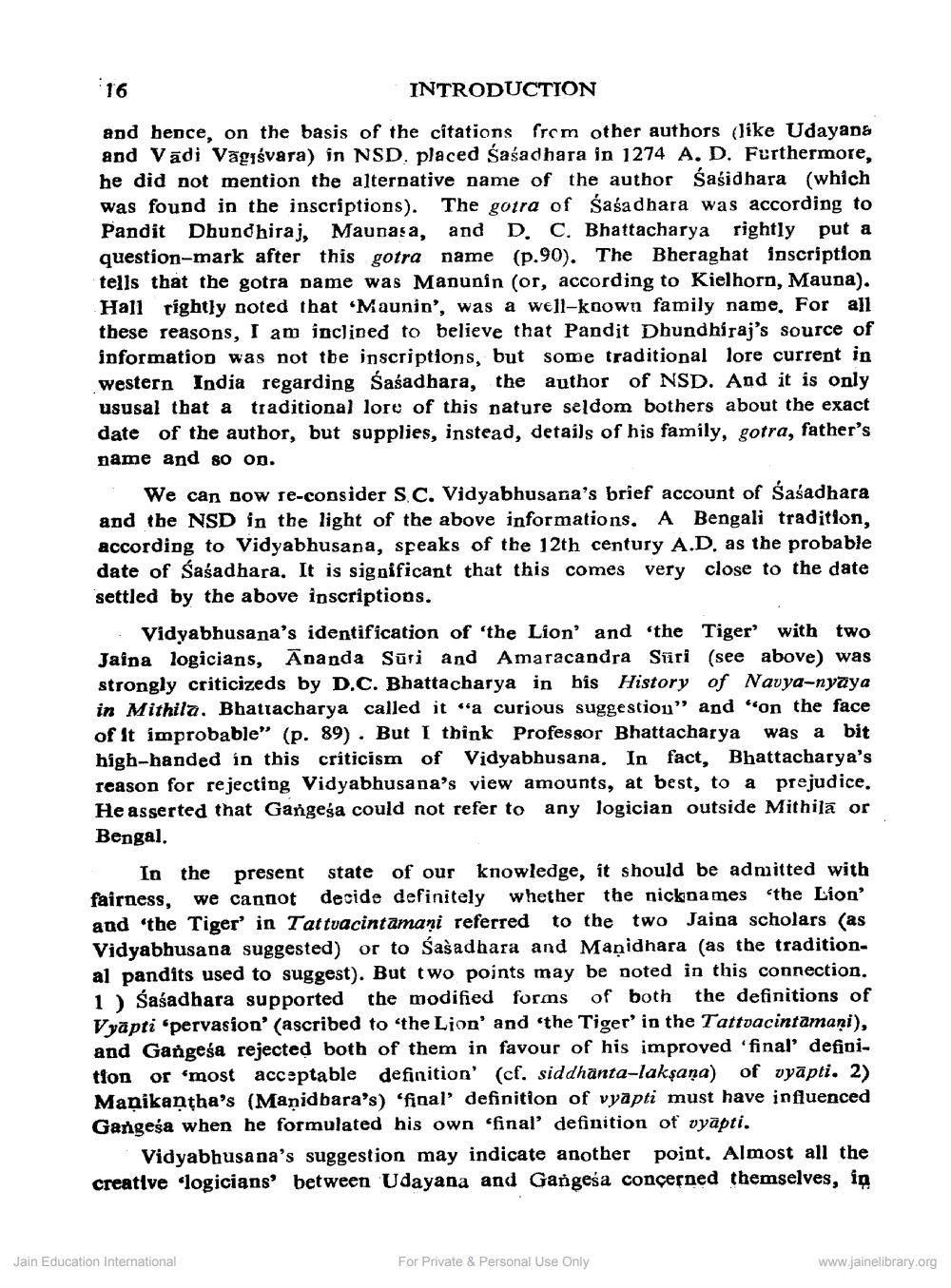________________
16
and hence, on the basis of the citations from other authors (like Udayana and Vadi Vagiśvara) in NSD, placed Sasadhara in 1274 A. D. Furthermore, he did not mention the alternative name of the author Sasidhara (which was found in the inscriptions). The gotra of Sasadhara was according to Pandit Dhundhiraj, Maunasa, and D. C. Bhattacharya rightly put a question-mark after this gotra name (p.90). The Bheraghat inscription tells that the gotra name was Manunin (or, according to Kielhorn, Mauna). Hall rightly noted that Maunin', was a well-known family name. For all these reasons, I am inclined to believe that Pandit Dhundhiraj's source of information was not the inscriptions, but some traditional lore current in western India regarding Sasadhara, the author of NSD. And it is only
ususal that a traditional lore of this nature seldom bothers about the exact date of the author, but supplies, instead, details of his family, gotra, father's name and so on.
INTRODUCTION
We can now re-consider S. C. Vidyabhusana's brief account of Śasadhara and the NSD in the light of the above informations. A Bengali tradition, according to Vidyabhusana, speaks of the 12th century A.D, as the probable date of Śasadhara. It is significant that this comes very close to the date settled by the above inscriptions.
Vidyabhusana's identification of 'the Lion' and 'the Tiger with two Jaina logicians, Ananda Suri and Amaracandra Suri (see above) was strongly criticizeds by D.C. Bhattacharya in his History of Navya-nyaya in Mithila. Bhattacharya called it "a curious suggestion" and "on the face of it improbable" (p. 89). But I think Professor Bhattacharya high-handed in this criticism of Vidyabhusana, In fact, Bhattacharya's reason for rejecting Vidyabhusana's view amounts, at best, to a prejudice, He asserted that Gangesa could not refer to any logician outside Mithila or Bengal,
In the present state of our knowledge, it should be admitted with fairness, we cannot decide definitely whether the nicknames the Lion' and 'the Tiger' in Tattvacintamani referred to the two Jaina scholars (as Vidyabhusana suggested) or to Sasadhara and Manidhara (as the tradition. al pandits used to suggest). But two points may be noted in this connection. 1) Sasadhara supported the modified forms of both the definitions of Vyapti pervasion' (ascribed to the Lion' and 'the Tiger' in the Tattvacintamani), and Gangesa rejected both of them in favour of his improved 'final' definition or most acceptable definition' (cf. siddhanta-lakṣaṇa) of vyapti. 2) Manikantha's (Manidbara's) 'final' definition of vyapti must have influenced Gangesa when he formulated his own 'final' definition of vyapti.
Vidyabhusana's suggestion may indicate another point. Almost all the creative logicians between Udayana and Gangesa concerned themselves, in
Jain Education International
For Private & Personal Use Only
www.jainelibrary.org




